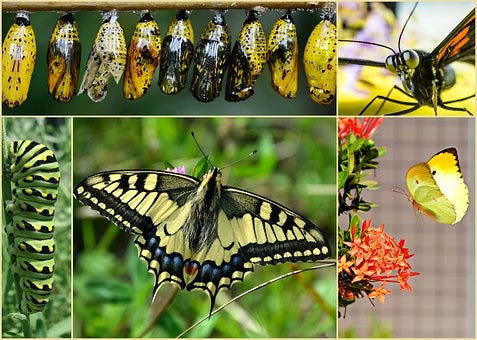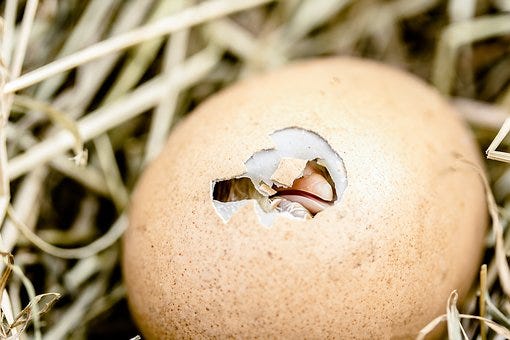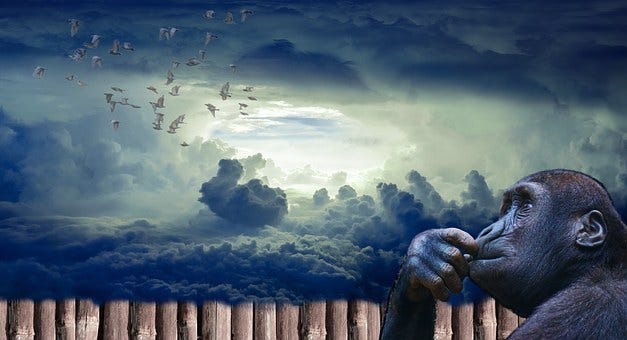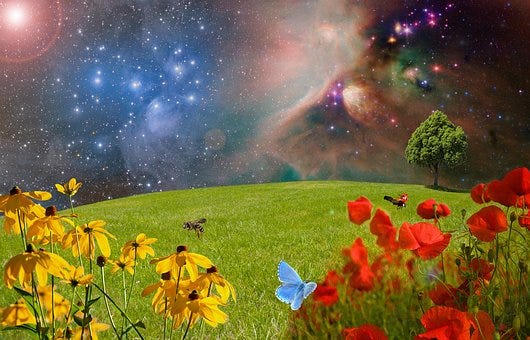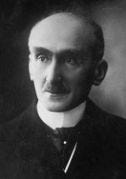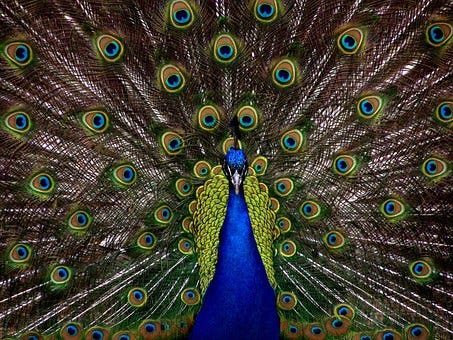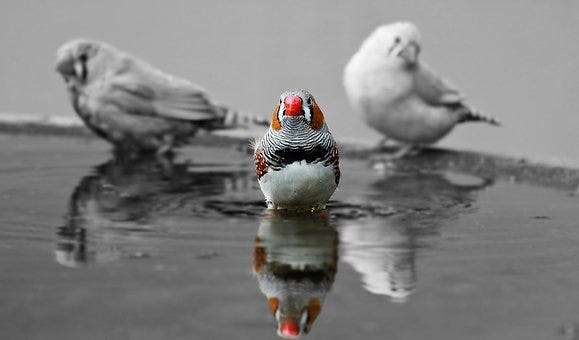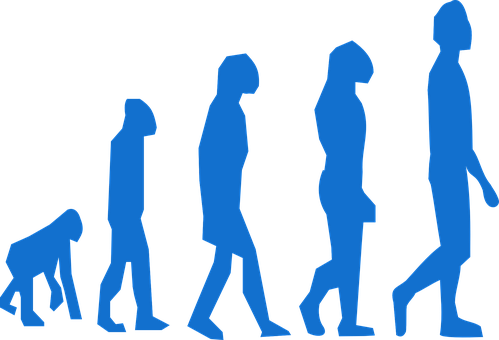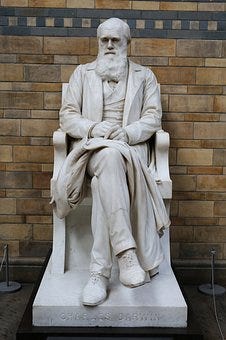
Not literally. Although today (January 8th 2021) is the anniversary of his birth, if alive he would now be 198. His memory lives on, however.
In 1859 Western science, and civilisation in general, stood at a crossroads, although this was not apparent at the time, and can only be appreciated in hindsight. Two naturalists had independently come up with the theory of natural selection to explain the evolution of life on this planet, Charles Darwin and Alfred Russel Wallace. Darwin had been formulating and reflecting upon his theory for many years. He seemed in no hurry, however, to publish his conclusions, until Wallace wrote to him., explaining his own remarkably similar ideas.
Not wishing to lose his claim to priority, Darwin was provoked into action. He was well connected, a member of England’s privileged elite circle, and was helped in his cause by powerful allies. As a consequence, his name is now the one associated with the theory of evolution by natural selection, which has come to dominate biological thinking in modern times. Wallace was less well known, and respectfully deferred to Darwin, never complaining about not being credited sufficiently for his contribution.
Their thinking then diverged. Darwin’s theological position is not completely clear. He may not have been an outright atheist, for here, soon after the publication of The Origin of Species, he wrote “I am inclined to look at everything as resulting from designed laws, with the details, whether good or bad, left to the working out of what we may call chance”¹. Let’s note here the use of the word ‘designed’, and that laws require a lawmaker. This is hardly atheism, something closer to deism. It is true to say, however, that he was completely committed to finding naturalistic explanations. His theory was then taken up enthusiastically, and elaborated upon, by materialists and atheists, right up to the present day. The best known expression of this comes from Richard Dawkins: “Darwin made it possible to be an intellectually fulfilled atheist”. He may not have foreseen it, and may not have wanted it, but his ideas inspired both Hitler and the eugenics movement, in addition to a generation of militant atheists.
Wallace, however, while still including natural selection in his theory, went on to believe that it was not sufficient to understand life in its totality. He thought that there were various human features that could not have evolved in this way: artistic and musical creativity, mathematical ability, abstract thinking, wit and humour. He thought that these must have a source in an “unseen universe of spirit”. He first expressed this opinion in 1869 in Darwinism. Much later he published his crowning glory, The World of Life: a Manifestation of Creative Power, Directive Mind and Ultimate Purpose, clearly showing that he was a believer in what we would now call Intelligent Design. He indeed anticipates many of the arguments of the modern Intelligent Design movement. Each element in his title would be considered a heresy in neo-Darwinism.
This book has just been republished, with a long and excellent introduction by Michael Flannery and a foreword by William Dembski². Here are some of their most important observations:
- Whereas Darwin thought that natural selection dispensed with teleology, “for Wallace… it became increasingly clear that biology could never dispense with teleology” (Pxiv).
- Darwin’s theory, despite his claims to the contrary, was not based on the scientific method. Rather he started with a materialist worldview “that served both as the lens through which he made his observations of the natural world and then as the framework into which he made them fit” (Pxiv). This led him to make “unwarranted scientific speculations, and reckless extrapolations buttressed by bad philosophy” (Pxvi).
- He “was pathologically obsessed with his theory, and he was often duplicitous and manipulative in its promotion” (Pxxiii, italics in the original).
Contrasted with this, “Wallace’s understanding of the natural and metaphysical worlds eventually became one — an integrated whole of scientific, social, political, and metaphysical thought… forming a revised natural theology” (Pxix). I would suggest therefore that Western civilisation, by promoting and worshipping Darwin while neglecting Wallace, chose the wrong path in 1859 at the crossroads referred to above. In retrospect this was a catastrophically wrong decision.
“Materialism is one giant foolishness. I think it will soon pass from the mind… There are laws of nature but they are purposeful. Everywhere we are confronted by power and intelligence. The future will be full of wonder, reverence, and calm faith, worthy of our place in the scheme of things”³. Wallace was correct in what he said here; materialism should have disappeared a long time ago. Unfortunately he was being over-optimistic because, over a hundred years later the battle has not been won, and the argument is still raging, although there are signs that the tide may be turning.
As I said above, there are certain affinities between Wallace and the modern Intelligent Design movement. This has a very bad press among materialists and atheists who, in order to discredit it, frequently misrepresent it, giving the impression that believers in ID are Creationists who think that an old man with a beard in the clouds was responsible for everything. This could not be further from the truth. As Flannery explains: “ID is by definition a minimalist proposition that certain aspects of the natural world are best explained by an intelligent cause. It makes no claim as to what that intelligent cause might be or the nature of the designer” (P xxi). That is not to say that advocates of ID do not have personal religious belief but, if they do, these are kept separate from the arguments.
Wallace went further than this. For him, subservient spirit beings were doing the designing and directing, not the Overruling Intelligence (God), therefore “no phenomenon could be ascribed (directly) to a first cause”. The laws of nature were the tools of these spirit beings. This did not mean that Wallace did not believe in a First Cause; there is a Supreme Architect to which these spirit beings answered. “Although we may never actually see the architect, we should not conclude that none exists; in fact, the design of the building itself demands one!” (Flannery, p 47). Such views are remarkably close to those of Western esoteric traditions, and other religions.
Wallace is no longer with us, but we can look forward to a renaissance of Wallaceism. This will be an important ingredient in the future reunification of science and religion, as we consign Darwinism and materialism in general, in their various manifestations, to the dustbin of history. It will be hard work, however. As Flannery notes: “Paradigms die hard and the Darwinian evolutionary paradigm will not go quietly”, for it is a “straitjacket imposed by Darwinian and neo-Darwinian powerbrokers in research and academia”.
May the battle continue. Happy Birthday Wallace.
I have discussed the refusal to recognise Wallace’s spiritual viewpoint by modern scientists and the media in this article, click here.
===========================================================================================
Footnotes:
1. Letter to Asa Gray, May 22nd 1860
2. Intelligent Evolution, Erasmus Press, 2020
3. Wallace, interviewed by The New York Times, October 8th 1911

